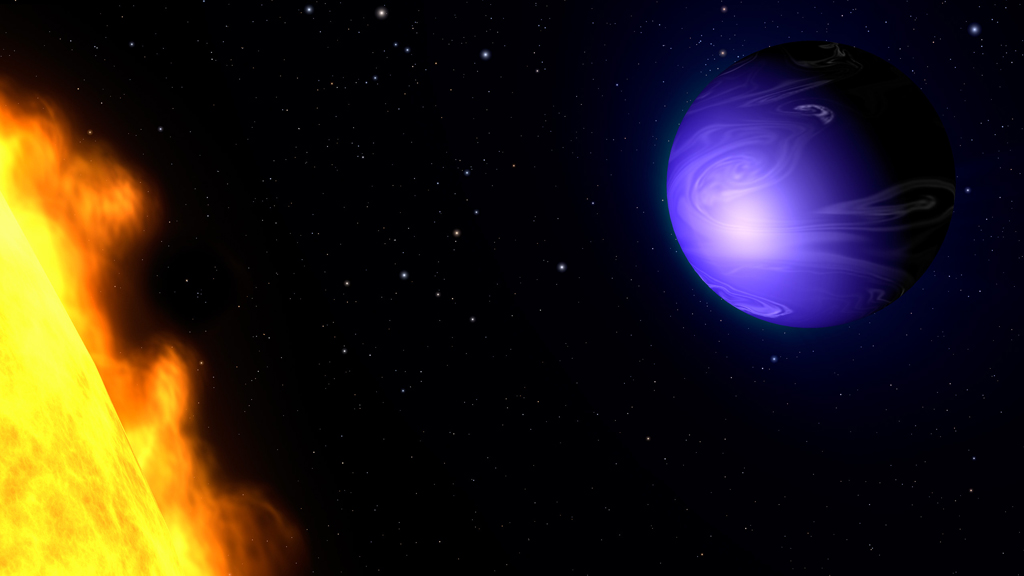Weather: hot with a chance of glass (62 light years away)
As the UK prepares for the hottest day of the year, be thankful we’re not on the “Azure planet”, where the temperature is 1,000 degrees and you risk getting caught in showers of glass.

Astronomers at Nasa said on Thursday that they had discovered more about the exotic planet, HD 189733b, which is located 63 million miles away.
Using the Hubble space telescope, Nasa has determined that the colour of the hostile planet is blue. The turbulent alien world orbits its star at a distance of just 2.9 million miles – one fiftieth of the distance that the earth is from the sun.
The proximity has created an incredible hostile environment, Nasa says. The planet, known as a “hot Jupiter” is gravitationally locked to the sun – meaning that one, scorched, side of the planet remains facing the star.
The daytime temperature on the planet is around 1,000 degrees Celsius, and the fact that one side is considerably hotter than the other (by around 260 degrees celsius) means the surface of the planet is blasted by howling winds of 4,500 miles per hour.
For more from Nasa on the weather on “hot Jupiters”, watch the video below.
Clouds on this planet are laced with silicate – meaning they are effectively “rock clouds”. The silicates, condensing in the heat, could form small drops of glass in the clouds. These drops would cause horizontal glass showers in the high winds.
The “glass rain” could be a reason for the planet’s blue colour, Nasa said.
“Silicates condensing in the heat could form very small drops of glass that scatter blue light more than red light,” the agency said.
The planet was originally discovered in 2005, and Nasa scientists have been using Hubble’s “imaging spectograph” to measure changes in the colour of light coming from the planet.
-
Latest news
-
Taylor Swift’s new break-up album breaks records3m

-
NHS trust fined £200K for failings that led to death of two mental health patients3m

-
Sunak vows to end UK ‘sick note culture’ with benefit reform3m

-
‘Loose talk about using nuclear weapons is irresponsible and unacceptable’, says head of UN’s nuclear watchdog3m

-
‘There wasn’t an Israeli attack on Iran,’ says former adviser to Iran’s nuclear negotiations team7m

-




